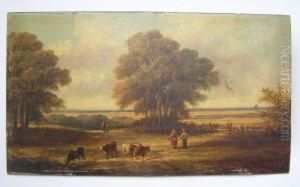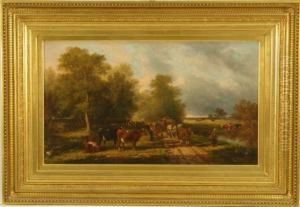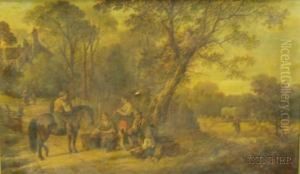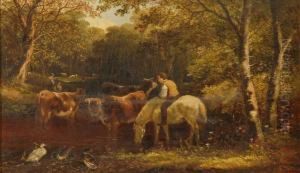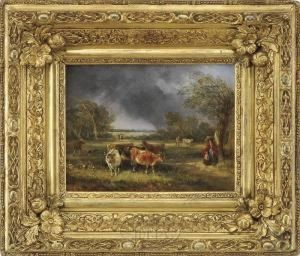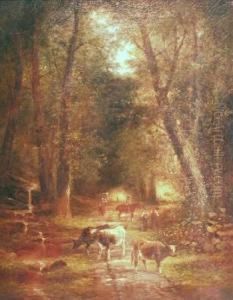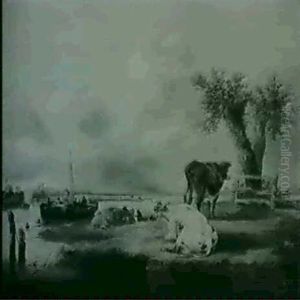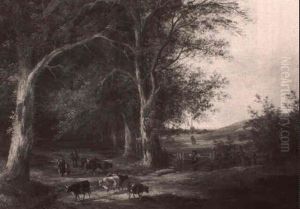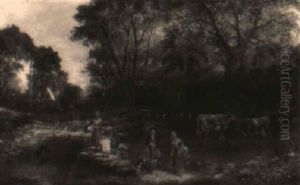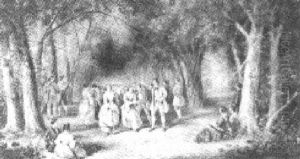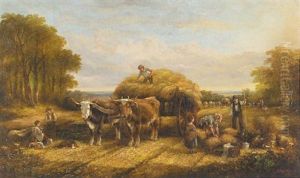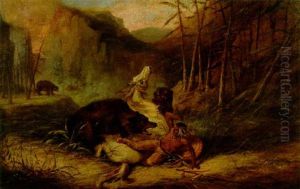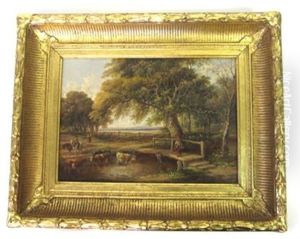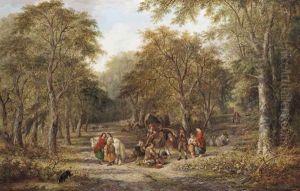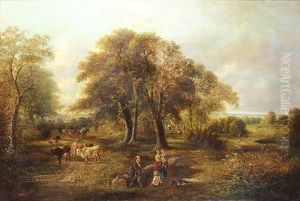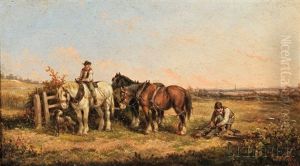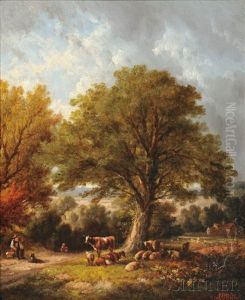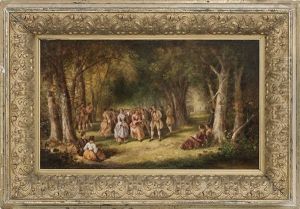Edmund Aylburton Willis Paintings
Edmund Aylburton Willis was an English landscape painter born in 1808. He is known for his picturesque landscapes that often depicted the English countryside, imbued with a sense of romanticism and an appreciation for the natural beauty of rural settings. His works often feature lush greenery, pastoral scenes, and serene atmospheres, capturing the essence of the 19th-century English landscape tradition. Willis was part of the Victorian-era art movement, which was characterized by detailed realism and a deep interest in nature.
While not as widely recognized as some of his contemporaries, Willis contributed to the art scene of his time with his distinct style and thematic focus. He was part of a generation of artists who sought to express the tranquility and timelessness of the English landscape, a counterpoint to the rapidly industrializing society. Willis's paintings were appreciated for their attention to detail, composition, and the ability to evoke emotion through the depiction of natural scenery.
Throughout his career, Willis exhibited his work at various institutions, including the Royal Academy of Arts, which was a prestigious venue for artists of the time. His works were collected by art enthusiasts and were often seen as evocative representations of an idyllic England, untouched by industrial progress. He continued to paint and exhibit his work throughout his life.
Edmund Aylburton Willis passed away in 1899, leaving behind a legacy of artwork that continues to be of interest to collectors and historians of English landscape painting. His contribution to the art world is preserved in the paintings that remain, offering a window into the past and the artistic sensibilities of the Victorian era.
